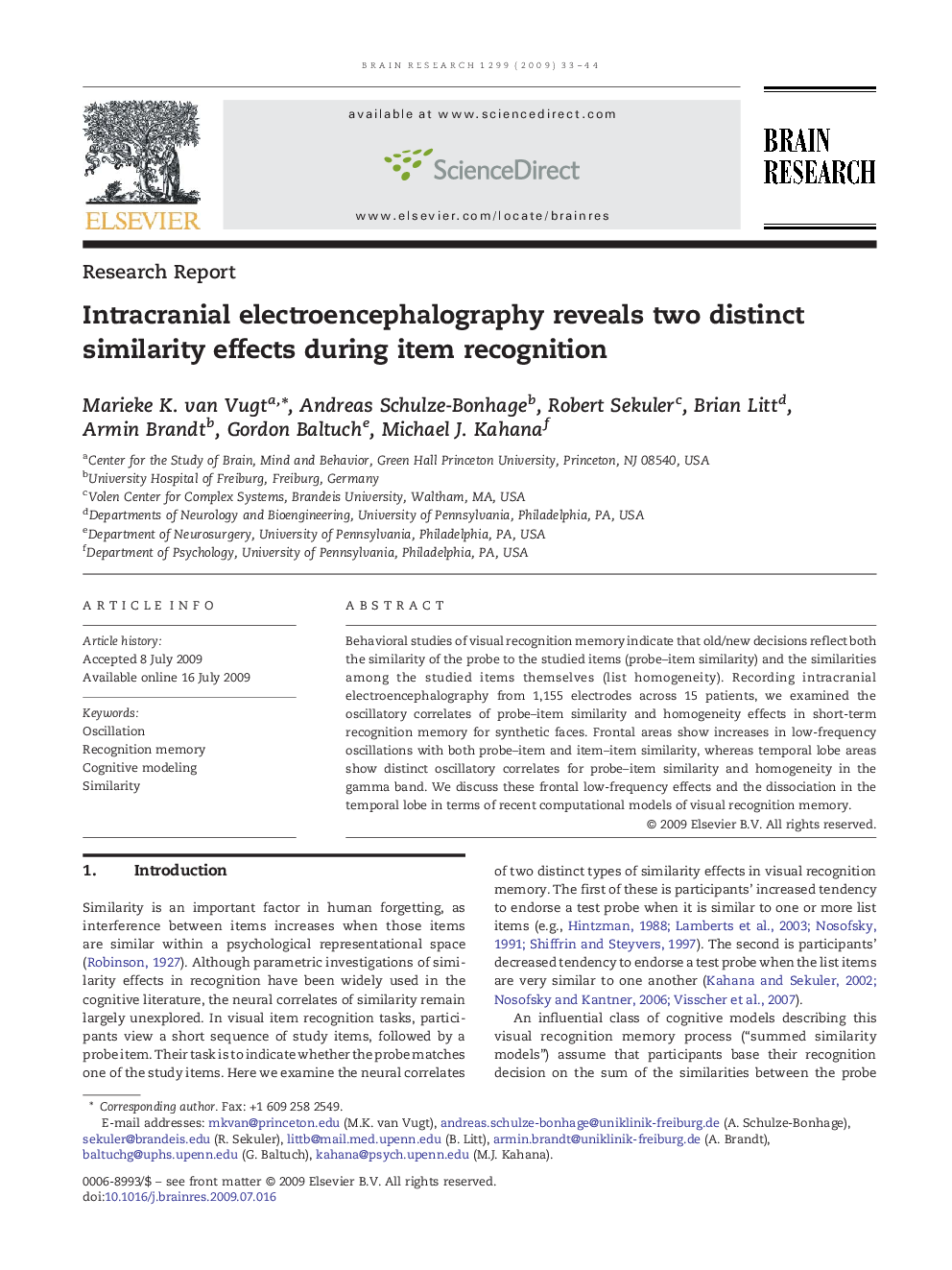| Article ID | Journal | Published Year | Pages | File Type |
|---|---|---|---|---|
| 4327785 | Brain Research | 2009 | 12 Pages |
Abstract
Behavioral studies of visual recognition memory indicate that old/new decisions reflect both the similarity of the probe to the studied items (probe-item similarity) and the similarities among the studied items themselves (list homogeneity). Recording intracranial electroencephalography from 1,155 electrodes across 15 patients, we examined the oscillatory correlates of probe-item similarity and homogeneity effects in short-term recognition memory for synthetic faces. Frontal areas show increases in low-frequency oscillations with both probe-item and item-item similarity, whereas temporal lobe areas show distinct oscillatory correlates for probe-item similarity and homogeneity in the gamma band. We discuss these frontal low-frequency effects and the dissociation in the temporal lobe in terms of recent computational models of visual recognition memory.
Related Topics
Life Sciences
Neuroscience
Neuroscience (General)
Authors
Marieke K. van Vugt, Andreas Schulze-Bonhage, Robert Sekuler, Brian Litt, Armin Brandt, Gordon Baltuch, Michael J. Kahana,
